
Featured Image: Graham Hancock. Credit: Uploaded by Cpt.Muji (Own Work) Source: Wikipedia (CC BY 3.0).
Fantastic series by Graham Hancock. Enjoy
Dig a little DEEPER ~ THEI.us Archive “Underworld”

Featured Image: Graham Hancock. Credit: Uploaded by Cpt.Muji (Own Work) Source: Wikipedia (CC BY 3.0).
Fantastic series by Graham Hancock. Enjoy
Dig a little DEEPER ~ THEI.us Archive “Underworld”
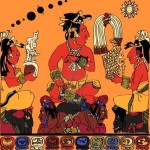
Featured Image: Drawing from the panel of the gods at Palenque. color sketch of the supreme ruler of priests and Maya. SOURCE.123RF (Royalty Free)
From Live Science
Oldest Maya Sun Observatory Hints at Origin of Civilization
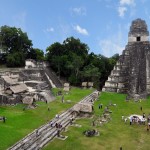
from National Geographic
© 2012 National Geographic; video courtesy Donald Slater
December 14, 2012—In a cave in Mexico’s Yucatán, a National Geographic explorer reveals what is believed to have been an underground observatory for witnessing the zenith passage of the sun.
Published on Dec 15, 2012
Just one more amazing solar observatory from an extremely advanced civilization.
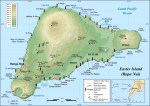
from youtube
uploaded by NationalGeographic
Published on Feb 16, 2012
On legendary Easter Island, scientists undertake a groundbreaking expedition: to map a vast cave system.

from Huffington Post
Posted: 04/20/2012 2:21 pm Updated: 04/20/2012 2:36 pm
It’s an ancient legend: Located in scattered areas of Earth are openings, doorways, gates, if you will, to some unseen underworld, also variously referred to as hell, Hades and Dante’s Inferno.
Researchers exploring the famous Twins Cave outside of Jerusalem have uncovered evidence of some pagan rituals, dating back to the Roman Empire, that suggest people may have believed the cave was a portal to this underworld.
Bar-Ilan University archaeologists found 42 clay lamps — dating to the late Roman period — in a 70-foot-long vertical shaft inside the cave. It’s speculated that the lamps may have been used in ancient rituals between the 2nd and 4th century C.E., to supposedly guide the Greek goddess Demeter into Hades to search for her missing daughter. . . . Read Complete Report

 Stoners coming out – beyond the marijuana monster myths | David Schmader | TEDxRainier
Stoners coming out – beyond the marijuana monster myths | David Schmader | TEDxRainier
Published on Feb 1, 2016
 Drug Smuggler Speaks Out About Incarceration and Marijuana | Richard Stratton | TEDxFultonStreet
Drug Smuggler Speaks Out About Incarceration and Marijuana | Richard Stratton | TEDxFultonStreet
Published on Nov 12, 2015
 Making peace with cannabis | Zachary Walsh | TEDxPenticton
Making peace with cannabis | Zachary Walsh | TEDxPenticton
Published on Sep 2, 2014
Continue on Page 2

Featured Image:Temple of the Inscriptions w/cutaway showing interior and tomb.
In this second part of our latest on the Subterranean World series we return to Mexico’s ancient city of the Mayan, Planque,and the tomb of an ancient ruler named Lord Pacal. In the 1960’s writer Eric von Daniken put fourth the theory that Pacal’s sarcophagus lid was a space ship taking him into outer space.
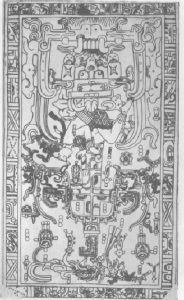 Hidden Tunnel Found Under Mayan Pyramid in Mexico
Hidden Tunnel Found Under Mayan Pyramid in Mexico
Published on Jul 27, 2016
Water Tunnel Discovered Beneath Mayan Temple In Palenque
DAHBOO77 Published on Jul 26, 2016
A journey to the Tomb of Pacal an ancient Mayan King.
Published on Aug 18, 2010
Ancient Aliens Astronaut Theory *DEBUNKED*
Published on Sep 1, 2015
Ancient aliens astronaut theory debunked. New chariots of the gods refuted. Scariest ufo documentary ever refuted. The Mayan Ancient Alien Astronaut theory at Palenque Pakal. Is this stone carving proof of the existence of aliens visiting early civilizations? Among the ruins in Palenque stands a pyramid called the Temple of Inscriptions. During the summer of 1952 deep within the bowels of this structure Alberto Ruz the director of research at Palenque would discover a tomb that held what appears to be proof of early man conquering space flight. This is a picture of the lid to the sarcophagus of King Pakal, and on it, is what appears to be a man in the cockpit or capsule of a rocket shit, manning the controls as he ascends into space. This theory was made famous in Erich Von Daniken’s 1968 best seller, Chariot of the Gods where Daniken compared the image on the stone to that of the astronauts of Project Mercury. But let’s take a closer look… Around the lid are hieroglyphics that represent night and day, and placed accordingly to show movement from east to west to represent Pakal transitioning from life (daytime) to death (nighttime). What is commonly mistaken for a rocket ship with fire shooting out of the bottom is in fact something found in many cultures known as The World Tree (more about that in another video). The branches extend into heaven, while the roots (fire?) extend into the underworld symbolizing a connection between the heavens, earth and the underworld. Sprawled across the branches is the double headed vision serpent which is believed to live in the center of the world. This is also a symbol for royalty. The celestial bird also known as The Bird of heaven is the lord of the cosmos “heavens.” which is why it is placed at the top of the World Tree’s branches. Pakal sits upon the Monster of the Sun. Because ancient cultures believed that when the sun set, it sank into the underworld where it went to die. The Monster of the sun represents Pakals transition, as it sinks to the world below, taking the king with it. Which is represented by his position as if he’s falling down. As much as I would love to know the early Mayan’s technological abilities didn’t just include plumbing, but interplanetary space travel as well… What you really see is just a beautiful depiction of a powerful king’s death and his travel’s from this world, to the underworld.
 Dig A Little DEEPER: Subterranean Worlds (1990’s Research)
Dig A Little DEEPER: Subterranean Worlds (1990’s Research)

Tunnel To “UNDERWORLD” Found Beneath Mexican Pyramid!
DRONE OFF A PYRAMID! – Teotihuacan Pyramid of the Sun and Moon
Published on Jun 29, 2017
Mexican Pyramid Liquid Mercury Secret Reveal
Published on Apr 27, 2015
Mexico archaeologists reach end of Teotihuacan tunnel,Sealed 2000 years ago
Published on Oct 29, 2014
Continue on Page 2>>>
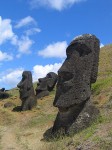
Featured image:Moai at Rano Raraku, Easter Island Credit: Aurbina SOURCE: Wikipedia, This work has been released into the public domain by its author, Aurbina at the English Wikipedia project. This applies worldwide
From NBC Science 8 Jun 2013 10:29am, EDT
Did Easter Island’s famous statues ‘walk’ into place?
By Tia Ghose, LiveScience
An idea suggesting massive stone statues that encircle Easter Island may have been “walked” into place has run into controversy.
In October 2012, researchers came up with the “walking” theory by creating a 5-ton replica of one of the statues (or “moai”), and actually moving it in an upright position, and have published a more thorough justification in the June issue of the Journal of Archaeological Science. If the statues were walked into place, then the islanders didn’t need to cut down the island’s palm trees to make way for moving the massive carvings, the researchers argue. . . . Read Complete Report
From youtube uploaded by NationalGeographic
National Geographic Live! – Terry Hunt and Carl Lipo: The Statues That Walked
Published on Aug 13, 2012
Easter Island archaeologists Terry Hunt and Carl Lipo offer a radically different theory of the island’s history.
Upcoming Events at National Geographic Live!
http://events.nationalgeographic.com/…
BEST IF VIEWED IN FULL SCREEN MODE